Space 2024
In the first blog of the year, we’ll look at the astronomical and space exploration highlights of 2024.
Space 2024 will be dominated by the Sun and Moon.
We’ll see humans return to the Moon – or at least fly around it.
This year will also see the fastest human-built object fly past the Sun.
But first we’ll discover when the Sun and Moon will combine to turn day into night.
Total Eclipse of the Sun
Arriving on April 8th will be the most watched total solar eclipse of all time.
The narrow total eclipse track will cross Mexico, the United States and into Canada.
Millions of people will congregate on the path of totality to see darkness in daytime.
I’ve seen three total solar eclipses and they are magical, emotional events.
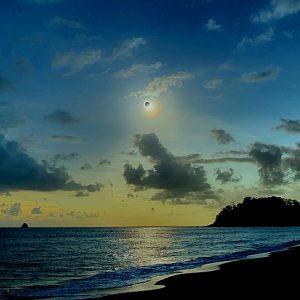
Total Solar Eclipse 2012, Ellis Beach, Queensland, Australia.
Photo: Dennis Ashton
We’ll preview the event in the March Wonderdome blog.
The Moon.
We know that the Moon will pass between Earth and Sun on April 8th.
Those lucky enough to be in the Moon’s shadow will see the total eclipse.
What about the rest of the year?
The Full Moon on September 19th is known as the Harvest Moon.
For two reasons, it will be special in 2024.
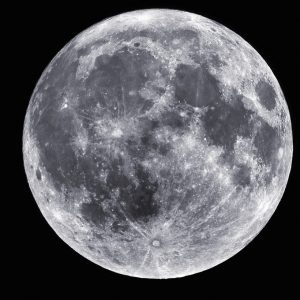
Full Moon. Image: NASA
The first is that there will be a partial lunar eclipse on September 19th.
A tiny sliver of the earth’s shadow will bite into the Moon.
On our image from Time and Date, the Umbra is the tiny shadow we’ll see in Sheffield, UK.
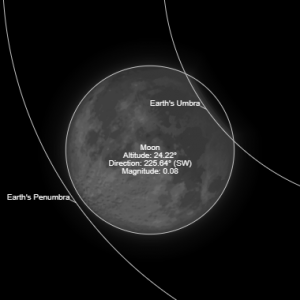
Lunar eclipse, September 19th. Time and Date
October’s Full Moon is called the Hunter’s Moon.
Like September’s Harvest Moon, it’s closer than usual to Earth.
At a distance of 357,271 km it’s roughly 3,500 km closer than normal.
That makes the Moon look bigger than usual, a Super-Moon.
So 2024 sees two Super-Moons in September and October.
Planets
Space 2024 holds opportunities to see all eight major planets of the Solar System.
Mercury
This elusive little planet makes an appearance in mid-January.
It will be low in the sky before dawn, below Jupiter.
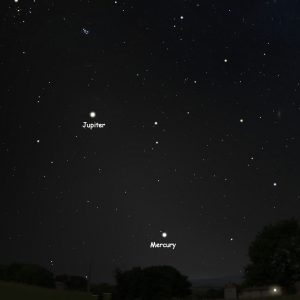
Jupiter – Mercury, January 12th. Stellarium.
Mercury will appear again, this time in the early evening sky, around March 24th.
Then at its greatest distance from the Sun, it will be low in the west after sunset.
Venus
The best time to see Venus comes at the end of the year.
From late November through December, Venus climbs higher into the evening sky.
It appears as a super-bright star in the west after sunset.
The year 2025 will begin with Venus as a wonderful ‘evening star’.
Mars
The red planet makes its comeback to the night sky later this year.
Through November and December it rises earlier each night among the dim stars of Cancer.
In January 2025 it reaches opposition, its closest point to Earth.
Jupiter
Jupiter, king of planets, is on view early in the year.
It’s high and bright in the south, outshining any star.
Jupiter is January’s jewel of the sky.
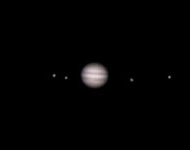
Jupiter and moons, telescope view.
With binoculars or a small telescope you can see the cloud stripes on the planet disc.
You’ll also see the four Galilean moons, like stars all in a row.
Jupiter reappears in November and December.
It is closest to Earth on December 7th.
Jupiter will be high in the sky through the winter.
Late 2024 is prime time to observe the largest planet and its moons through a telescope.
Saturn
Saturn will be closest to Earth on September 8th.
So autumn is the best time to observe the ringed planet.
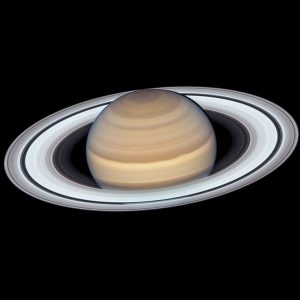
Saturn. Credit: NASA / ESA / Hubble Space telescope
And those rings are closing up.
By 2025, the rings will be edge on and almost disappear from our view from Earth.
Uranus & Neptune
These distant worlds need a telescope to see them as blue-green discs.
The best observing time is around opposition.
Uranus is closest to Earth on November 17th.
Neptune’s closest point comes earlier, on September 21st.
If you want to find them with a telescope, use Stellarium to find their postion among the stars.
Shooting Stars
The Quadrantid meteor shower gives a brief flurry of shooting stars on 3rd / 4th January.
The brief peak is expected at around 9.00am so looking out before dawn will see most meteors.
The shooting stars will scatter across the sky from the north-east.
The most prolific meteor displays come in August and December’
The Perseids peak on the night of August 12th / 13th.
The moon will set around midnight, leaving a dark sky for the shooting stars.
December’s display is the Geminid meteor shower.
This reaches maximum numbers on the night of December 13th.
Unfortunately the Moon will be almost full and its light will drown out all but the brightest meteors.
Space Missions
Artemis 2
Space 2024 sees the launch of some fascinating and significant space missions.
The biggest is NASA’s Artemis 2.
Scheduled for November, Artemis 2 will take four astronauts on an eight-day journey around the Moon.
It is the prelude to a lunar landing, possibly in 2025.
We’ll have more about the mission as the date approaches.
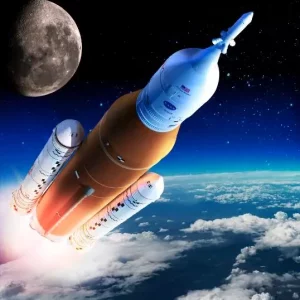
Artemis 2. Image: NASA
Dream Chaser
NASA hopes to send the Dream Chaser space plane to the international Space Station in April.
It will carry a cargo of supplies at first.
In future missions it may take astronauts to and from the station.
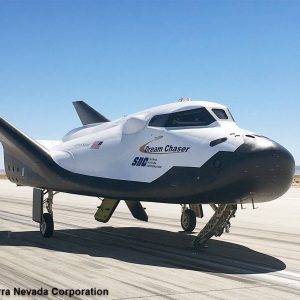
Dream Chaser space plane. Credit: Sierra Nevada Corporation
Chang’e 6
China’s unmanned Chang’e 6 should launch in May.
It is designed to land on the far side of the Moon and return rock samples to Earth.
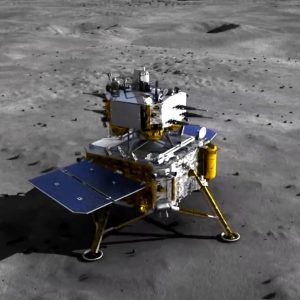
Chang’e 6 lander. Credit: China News Service
Martian Moons Exploration, MMX
Japan hopes to launch a robotic probe to the Martian moon Phobos.
MMX will land on Phobos and return samples to Earth.
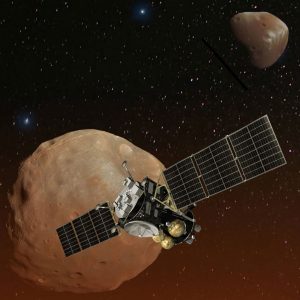
MMX. Credit: NASA
Europa Clipper
NASA aims to launch this space probe in October.
It’s target is Jupiter’s moon Europa.
This Jovian moon is suspected to have an ocean of water beneath its icy surface.
Europa Clipper will orbit the moon and collect more data about this world which may harbour alien life.
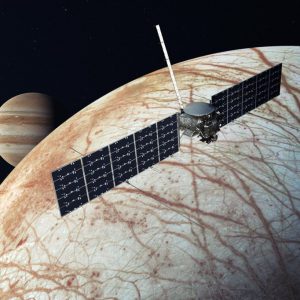
Europa clipper. Image: NASA
And I’ll be onboard for the 1.8 billion mile journey!
Well, in name at least.
Europa Clipper is carrying my name and many others on a microchip along with a poem to the moon.
Parker Solar Probe
If all goes to plan, Artemis 2 will dominate space news at the end of the year.
But there is an unmanned space probe which may also grab the headlines.
The Parker Solar Probe was launched in 2018 to study the Sun at close quarters.
On December 24th 2024, the spacecraft will dive in to its closest approach.

Parker Solar Probe: NASA
It will fly past the Sun at a distance of only 6 million km or 3.8 million miles.
This audacious flight will see the probe reaching a speed of 435,000 mph.
That speed would take us from London to New York in just 30 seconds!
It will become the fastest ever human-made object.
And the mission will have relevance to the Moon.
It’s findings will tell us more about radiation emitted by the Sun.
This in turn will help NASA protect astronauts when they return to the Moon and embark on a mission to Mars.
As with the other missions, there’ll be more in the Wonderdome blogs through the year.
Happy New Year!
From myself and the Wonderdome team, best wishes for 2024.
May your skies be clear and your stars shine bright!
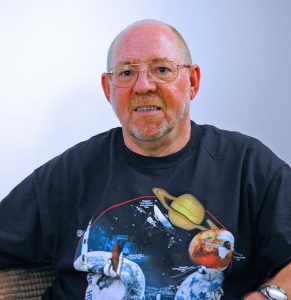
The author: Dennis Ashton is a Fellow of the Royal Astronomical Society and a Wonderdome presenter.
Would you like to hear more Astronomy news?
Do you want to to find out about our upcoming public events?
Follow WonderDome Portable Planetarium on Twitter and Facebook or go to our web site wonderdome.co.uk

